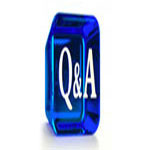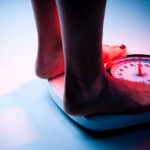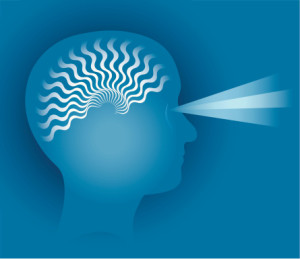Top-featured

Questions to ask your Doctor
In cases of emergency 911, you may refer to the emergency page and this one on your cell phone, if possible.
If you are not in an emergency, it’s wise to know your health access depends, in part, on being an active participant in your care. Your doctor may direct you to take his or her proposed diagnostic tests and develop a treatment plan. Yet, your doctor may have as little as 15 minutes to accomplish these activities. So, he or she may ask you to return to discuss secondary concerns or follow up for diagnostic test results and to receive a proposed treatment plan. By having an appreciation for your doctor’s background through research and streamlining communication to assist with quality care before your appointment, you may significantly enhance your bond, optimize the opportunity for high quality care and contain costs.
 The Top Questions for Your Doctor
The Top Questions for Your Doctor
If you’re planning on diagnostic tests or a treatment plan, it’s OK to have the following “W’s” answered in your mind and on paper.The good news is that your physician will likely appreciate your interest in wanting to make an educated decision through this informed consent tool. Of course, the best approach is up to you. You may have more or other questions you want to ask. In the meantime…
What is wrong with me?
What can I do to take better care of myself?
What is the proposed diagnostic test(s) be able to conclusively diagnose? Will I need other tests later? What are my risks if I wait to have the test(s) until I can conduct research to learn more and conduct a comparative analysis?
What can’t the diagnostic test(s) rule out and what are the risks associated with the test?
What is the proposed treatment plan? What will the treatment correct and not correct? How long will the results last and will I have to monitor the results over time? If I have to monitor the results over time, how can I be ensured to receive notice and what types of tests may be required?
Why does the physician have a preference?
What will happen if nothing is done at all?
What are the benefits, risks, and recovery time associated with the proposed treatment plan based on the physician’s level of training and experience?
What types of patient comforts will I receive, such as to stay ahead of pain or prevent nausea?
What are the alternatives to the proposed diagnostic test(s) and treatment plan?
What coping skills will be required to manage a sub-optimal outcome or no treatment, such as the risk of needing assistance with daily living skills?
What time frame is called for to have the proposed tests(s) and treatment plan, according to traditional diagnostic reasoning guidelines? If the time line presented to you differs, ask why.
What would the physician recommend if you were his or her daughter or son?
Is there anything I should do to reduce the risk of complications from my condition?
What are the costs?
- Follow your instincts. Seek out a second opinion if you feel you need one. Don’t let costs get in the way of treatment. Check out other resources if you need to.
- If you have already been to doctors and have not responded to treatment, it’s OK to ask where the Number 1 Specialist for your symptoms and condition is in or out of your local area or Country.
Special Considerations: Urgency and Invasiveness for Tests and/or Treatment
- Is the facility where the test and treatment will occur a fully accredited surgical center?
- If you are receiving anesthesia, it’s OK to learn more about anesthesia considerations.
If you are receiving an Implantable Device, it’s OK to:
- Know the Brand Name, Type, “Model Number” and/or Style. Check the manufacturer’s website to learn more about it. Type the name of the implant and “benefits/risks” into your Internet browser and learn more.
- Keep this information for your records.
- Sign up for registries that track patient outcomes. Ask your physician where you may find one, go online to find one and check the manufacturer’s website. This may allow you to receive alerts to know if you need to action regarding your health.
If you are receiving a prescription, it’s OK:
- It’s OK to ask your doctor about drug side effects and risks for interactions with other drugs, including dates that you may need to go for blood work to detect the onset of a side effect, such as high cholesterol.
- It’s OK to ask your doctor how long the drug has been on the market. Drug recalls may not commence until five or more years after a drug is initially approved by the FDA.
- It’s OK to ask your pharmacist the same questions, review the package insert and/or the drug manufacturer’s website to learn more from the prospective of the pharmacist.
- If you experience side effects, contact your doctor immediately.
- If you do not respond to medications a timely fashion, seek out an alternative.
It is important to recognize that medications and medical procedures are associated with benefits and risks that should be discussed with your physician. It is important to recognize that all information contained on this website cannot be considered to be specific medical diagnosis, medical treatment, or medical advice. As always, you should consult with a physician regarding any medical condition. Your Health Access disclaims any liability for the decisions you make based on this information.

Choose Quality Care
 If you plan to be savvy about your health access, you may want to know how to make an informed decision. All of which may assist in optimizing your outcome and saving significant money. The following information does not suggest you delay or postpone any aspect of your care when necessary, such as in the case of emergency. You may want to perform the following tasks to support your goal for informed decisions with your doctor, including the following.
If you plan to be savvy about your health access, you may want to know how to make an informed decision. All of which may assist in optimizing your outcome and saving significant money. The following information does not suggest you delay or postpone any aspect of your care when necessary, such as in the case of emergency. You may want to perform the following tasks to support your goal for informed decisions with your doctor, including the following.
- Selecting Your Doctor
- Choosing Quality Care
- Q and A with Your Doctor for Health Screening or Condition Onset
- The Top Questions to Ask Your Doctor
Selecting Your Doctor with Research
Regardless of your insurance plan or lack thereof, you may want to select your doctor with the aid of research. Each doctor has a unique armory of tools and techniques. Many physicians focus their practice on specific areas of expertise. Knowing how to conduct research may simplify the choices you make and may optimize your outcome.
You may want to know about tips to set your agenda for quality care and the documents you may want to review. As Dr. Steven Weinberger, Executive Vice President & CEO of the American College of Physicians in Philadelphia, PA. adds, “What should drive care is what provides the greatest benefit to patients with the least harm. Patients and their physicians need to have an open, honest communication about potential benefits and risks of care.” Learn about helping to meet these objectives in the Choosing Quality Care link above. The treatment options available to you may depend upon a variety of factors, including:
- your age, overall health, and medical history
- your signs and symptoms
- diagnostic test results
- your expected tolerance for specific medications, procedures, or therapies
- your expectations for managing the course of the disease, such as coping skills to manage recovery and a suboptimal outcome should one arise
- your physician’s opinion or preference, and/or select hospitals preference or access to certain technologies and therapies
- your opinion or preference
Q and A for Health Screenings and the Onset of Conditions
You may want to develop you own questions to ask your doctor. We have some ideas based on turning to leaders in medicine to bring you top questions to ask your doctor in various medical specialties. Click on the link above for the top Questions for Your Doctor.
Hospital Visits
If your proposed tests, diagnosis, and treatment plan will not conclusively result in a positive outcome, it may be important to encourage the admitting physician or surgeon to involve others with your care, such as, a different type of Board Certified Medical Specialist or Internal Medicine Physician. When in doubt, you may seek out a second opinion.
Many medical conditions require an interdisciplinary approach. You may make a request with the medical specialist or admitting physician who sees you to have your medical records prepared and ready for you upon discharge, particularly if the following applies.
- If your condition requires a physician consultation, diagnostic tests, or treatment outside the hospital within 24 hours to seven days.
It is vitally important to follow the discharge summary that directs you to the next doctor or medical specialty area you should see by the time that you are directed to do so on the document.
Your Heath Access Alert
Your Primary Care Physician, Internal Medicine Physician or Family Physician may be in the best position to coordinate complex care and help ensure costs are contained. This does not mean that your costs may not be equally or more so contained by seeking out a medical specialist of your choice when you feel you need one. If you are admitted to a hospital, the medical specialist who relates to your care need will be overseeing your care and coordinating the introduction of other medical specialists, as he or she deems necessary.
Medical Costs
Medical costs may vary widely. It is important to understand your insurance policy benefits, including: exclusions, limitations and deductibles. Your deductible is the amount you have to pay before your insurance benefits kick in to absorb the balance of costs.
Out-of-pocket costs for diagnostic tests may be significantly lower at physician’s offices with in-house labs, Urgent Care Facilities and Outpatient Medical Diagnostic Centers for Imaging tests when compared to hospitals. Select online labs that have board certified physician panels may further reduce out-of-pocket lab costs in U.S. states where possible.
It is important to recognize that all information contained on this website cannot be considered a specific medical diagnosis, medical treatment, or medical advice. As always, you should consult with a physician regarding any medical condition.Your Health Access disclaims any liability for the decisions you make based on this information.

An Ideal Metabolic Pace for Weight Loss?
Weight loss is optimized by setting the tone with healthy daily habits that focus on maintaining an ideal metabolic pace. If we were to balance the amount of energy we expend with the amount of “food” we consume and activities we perform, we may achieve an ideal metabolic rate for fat burning. If we understand that our bodies rely upon precision in the measurement of food and activities necessary, we may achieve optimal metabolic performance for our bodies. Knowing that our lifestyles have an impact on our bodily systems, we are one step closer to understanding how to achieve the ideal metabolic rate for fat burning. You may be interested in Weight Loss Tips . You may need the support of a Personal Trainer. Now, let’s imagine a possible ideal day.
A Morning Time Focused on Weight Loss with Proper Sleep and Diet
We wake up after six to eight hours of peaceful, low- metabolizing sleep to snack on a “fuel” source such as, an egg and high fiber foods. This will allow your metabolism to speed up and to burn fat until “refueling” begins. So, you consume calcium-fortified foods and drinks, such as, milk and orange juice, to accelerate your metabolism. In this way, you may properly support the morning activities of showering, dressing and getting on your way for other pressing chores.
Morning Time Physical Activities to Boost Your Metabolism
Next is the workout. Ideally, a comprehensive workout occurs in the morning to raise metabolic activity to a fat-burning rate. If this is not possible, consider a fast-paced jogging march, elevating your knees to your hips, for 23 minutes or more each morning. This will certainly speed up your metabolism for motivation for the daily events to come. If a morning workout is possible, you may enjoy a protein snack for metabolic enhancement prior to your workout and remind yourself of the benefits associated with exercise. Consistent weight training increases the resting metabolic rate by close to 10%. Aerobic (cardiovascular) activity–meaning any activity in which one foot is off the floor–for 23 minutes or more, three to six times a week, may increase your metabolism to help stimulate fat burning.
Snacking For Metabolic Rate Maintenance
On the way to your next daily project, don’t forget a piece of fruit to maintain a proper “fuel” intake schedule. When you arrive at your next stop, you may remember to stand up and walk for five minutes every hour to be in tune with a healthy metabolic beat. Also, remember to stand up and do cross laterals at your hip line to stimulate brain function every 30 minutes.
The Lunch Hour Metabolic Boost
Within four hours or more of breakfast, you may feast on the biggest healthy meal of the day, possibly including: lean beef, fish, white meat, chicken, tofu, or beans. Remember proteins are a basic metabolic enhancement. You may continue to snack on vegetables or fruits every three to four hours thereafter to support metabolic maintenance rates. Somehow, you may want fit in two glasses of green tea or oolong tea to rev up your metabolism for a couple of hours.
Dinnertime Metabolics for Weight Control
Soon, you’ll have an early light dinner since people do not require much “fuel” to sleep. You may wish to light a vanilla candle which is known to reduce food intake. After dinner, you may plan your meals for the next day. If you’re on a diet, you won’t drastically cut your caloric intake because this will have an adverse effect on your resting metabolic rate. Instead, you may schedule an appointment with a nutritionist to identify your appropriate caloric intake. This may be particularly important because bodies require a certain number of calories to burn in order for body systems to function properly, including: breathing and heartbeats. You won’t forget the small stuff either. You might include red, green or chili peppers to add a temporary spike in the elevation of your metabolic rate by over 20%. By day’s end, you may have produced adrenaline to accelerate your resting metabolic rate. You may have selected foods that do not produce as much insulin as others because certain foods can create more insulin and slow the metabolic rate. Finally, a sound sleep awaits you, which often results in a proper regulation of our resting metabolism when healthy.
An ideal metabolic pace is not one size fits all. Visit a nutritionist, personal trainer and your physician, if necessary. You may end a wonderful day if you focus a healthy metabolic pace that is ideal for you. A proper metabolism pace fuels your body, assists in burning excess fat, and enhances life with energy and vitality. Let’s go ahead and do it all over again tomorrow!
It is important to recognize that all information contained on this website cannot be considered to be specific medical diagnosis, medical treatment, or medical advice. As always, you should consult with a physician regarding any medical condition.

Brain Fit Tips For The Young and Old
Brain Fitness has become as popular as physical education class these days. So, check out the top ten tips that come to mind for many interested in fine tuning the orchestra in their brain. Indeed, there are many ways to stimulate your brain. Whether you are young, middle aged, a senior, or brain injured, brain fitness may become a very advantageous part of your daily routine.
Drink Water! Dehydration may actually contribute to poor concentration, inhibited memory, and limited focus abilities. This is due, in part, to the fact that your brain needs water. Water fills up as much as 90% of your brain. In short, drinking 6-8 eight ounce glasses of water each day helps to prevent strain on your brain. Water can also help get your brain going before staff meetings, presentations, and classes. In addition, water keeps your brain thinking clearly through stressful situations.
Peaceful Sleeping. Six to eight hours of uninterrupted sleep helps to compile the details of learning for the day. Peaceful sleep also provides you with ample energy and focus to maintain attention to intellectual topics the next day.
Proper Nutrition. Proper nutrition balances hormones and chemicals in the brain. Foods that stimulate brain power are filled with vitamins B12, B6, C and Vitamin E, as well as, folate, calcium, potassium and magnesium, and betacarotene. Foods containing these ingredients can enhance your brain’s function and memory, including: milk, orange juice, vegetable juice, spinach, black-eyed peas, acorn squash, salmon, baked potato, and banana.
A bit of honey, with its anti-oxidant properties for the aging brain, may help to inhibit free radical damage to cells. It’s also critical to stay away from foods that are known to hinder your brain, including: artificial sweeteners, corn syrup, high-sugar drinks and foods, hydrogenated fats, and white-flour products.
Connective Music. Researchers at the University of California evaluated children who studied piano and sang daily in chorus to find that they scored 80% higher in spatial intelligence when compared to a group that did not engage in a form of music. Singing exercises your right brain for improved problem-solving and pattern recognition. In fact, people who stutter often stop stuttering when they sing.
Learn. Reviewing and reflecting on new information can stimulate your brain. It is easier to retain new information when associating the new information with prior knowledge about the relational topic. Consider writing down connecting points which can reinforce new memories.
Engage in Emotions. Your brain’s amygdala manages your emotions, including your responses to stress and fear. In doing so, your amygdala helps to process your memories with the assistance of your brain’s hippocampus which manages factual information. Your hypothalamus steps in to direct the pituitary gland for its release of responsive hormones, such as, body temperature, appetite, and sexual function.
Exercise. Exercise allows your body to process oxygen much more quickly and efficiently throughout your brain and body. In doing so, exercise helps to protect the health of your brain cells because cells require oxygen to thrive. Some of the latest research shows that exercise triggers new connections in nerve cells of the brain and can lead to the growth of new cells. Movement alone can wake up the brain.
Sharpen Executive Functioning. Managed by the frontal lobes in the neocortex of the brain, executive functions take place that are critical for quality life . These functions include: memory, flexibility, making adjustments, planning, rules, and resisting unhealthy temptations. These functions may be improved with movement or exercise and redirecting attention to different topics or different forms of presentations.
Meditation. Bringing your attention to your breath through meditation for five to ten minutes each day can help you relax. This type of calming can clear your mind. Deep breathing provides more oxygen for your blood and stimulation for your brain.
Brain Games. There are brain game software programs offered by companies like Nintendo and Head Strong that may improve short-term memory. There are also board games, card games and puzzles that may help keep your mind agile. Engaging your mind in games can help keep your mind sharp. Even a good riddle is a great way to stimulate your brain.
Indeed, there are many things you can do to stimulate your brain. In fact, a proactive approach is always best. Why not stay ahead of brain dysfunction before it begins? It’s great to be smarter, more creative, inventive, and to experience inviting conversations. In any case, it’s never too late to add more power to your brain! With a few simple tools, techniques and tricks, enhancement in brain power can be yours!
It is important to recognize that all information contained on this website cannot be considered to be specific medical diagnosis, medical treatment, or medical advice. As always, you should consult with a physician regarding any medical condition.

Top Eye Docs Review LASIK & Choices
Eye doctors weigh in on refractive surgical techniques that are designed to reduce or omit the need for eye glasses or contacts, such as LASIK. Excimer lasers, used for LASIK, have a 50 year history with initial use in the industrial industry. That is, until the lasers made their mark in the ophthalmic community. In the 1980’s, the excimer laser became available to eye doctors and LASIK was “born”. As a result, the excimer laser began to transform the techniques available to restore vision, while for the first time reducing or eliminating dependence on eyeglasses or contacts. The excimer laser was revolutionary for U.S. eye surgeons interested in offering the most sophisticated options to manage vision loss.
LASIK and Alternatives FAQ’s
Since then, there have been a variety of techniques introduced following LASIK through alternative options, known as Refractive surgery techniques, in order to reduce or eliminate dependence on eyeglasses and contacts. The right option for your vision loss depends upon numerous factors, including: the condition of your eyes, your eye surgeon’s preference, the technique that the surgeon has focused on in his or her practice and your choice after being presenting with all options. So, we turned to several leading ophthalmologists to explore the path of LASIK and why there are alternatives.
Can LASIK technology get any better?
As Dr. Joseph Dello Russo, leading LASIK Eye Surgeon with offices in New York and New Jersey, explains, “The most cutting edge technology is available for LASIK today. The LASIK procedure, with the very best eye surgeon using the very best technology, offers a great solution for those who qualify.”
What might disqualify a person from LASIK Treatment?
As Dr. Peter S. Hersh, leading Refractive Eye Surgeon of Teanack New Jersey, explains, “Refractive surgeons use a variety of tools to determine the predictability of a positive outcome from LASIK surgery. We examine the ocular surface to rule out eye conditions and treat any eye conditions that are discovered. In some cases, such as, dry eye syndrome, success in treatment for eye conditions allows people to qualify for LASIK surgery. Optimization of the patient’s ocular surface is the key to a good outcome. Of course, there are other refractive options for those who are not ideal candidates for LASIK.”
What about alternatives, such as PRK and LASEK?
As Dr. Parker, leading eye surgeon of Salt Lake City, UT explains, “The PRK procedure is different from Lasek because no flap is created in PRK in order to perform the treatment. Instead, the surface layer of the cornea, called epithelium, is removed and a laser is applied to the underlying cornea. The epithelium then gradually heals. There are many reasons why patients may or may not be suitable candidates for PRK. Proper screening and evaluation is very important for identifying candidacy for all types of refractive surgery.”
How may the ICL choice offer a better option?
Dr. Frank Owczarek, leading Ophthalmologist of Newark, Delaware explains, “LASIK is the most common refractive procedure and works well for many patients who have a normal cornea. What many people do not realize is that the ICL may be a better option for some of them. The ICL also works well for many people with severe near sightedness who do not qualify for LASIK.”
How about the alternatives for people who do not qualify for Laser Corrective Surgery?
As Dr. Lance Kugler, leading Refractive Eye Surgeon of Omaha, Nebraska adds, “ICLs have given Refractive Surgeons an option to offer people who have been told in years past that they were not a candidate for laser corrective surgery. For patients who are too nearsighted or have irregular corneas, thus are unable to have LASIK, the ICL is a nice option. These advanced technologies are giving people unprecedented visual function and freedom. It’s really an exciting time for patients and an exciting time in the industry.”
In What Ways May ICL’s Compare to LASIK?
As Dr. Curtin G. Kelley, leading Refractive Eye Surgeon of Columbus, Ohio explains, “LASIK surgery has stood a test of time by altering the curvature of the eye to restore vision. ICL’s do not reshape the curvature of the eye, are removable and offer an extremely stable alternative for those who qualify. The technique used in the procedure is identical to that of cataract surgery and is a standard technique. Cataracts may develop naturally with aging. In LASIK, the cataract procedure is more highly technique driven in terms of the calculation for the lens power. By the same token, the ICL technique is a very delicate surgery, much like operating on a butterfly wing, so proper patient selection and technique is important. The results of the ICL typically provide for vision restoration in 24 hours.”
Next Visit, The Refractive Lens Exchange Alternative
So there you have it! Answers to just some of the initial information you may wish to further review with your Refractive Eye Surgeon. At this point, why wait? Check in with a Refractive Eye Surgeon to identify the choice that you qualify for! A lifestyle with the reduced or omitted need to wear optical devices may be just what you desire.
Next, How to Choose Your Eye Doctor and Find an Eye Doctor
It is important to recognize that all information contained in this forum cannot be considered to be specific medical diagnosis, medical treatment, or medical advice. As always, you should consult with a physician regarding any medical condition. Your Health Access disclaims any liability for the decisions you make based on this information.

Inviting Gifts for Lovers… Cocoa, Red Wine and More
Healthy gifts for lovers can enhance your lives in more ways than one. Whether it’s true love, blinding love, or a sense of broken love, there are many ways to indulge in healthful gifts for the one you love.
Mmmmm…..Chocolate: A Staple for Love
Once thought to be an aphrodisiac, chocolate has been cultivated and refined for thousands of years. The cocoa bean, which is not actually a bean but a seed, comes from cacao trees grown in tropical environments. Cocoa contains many benefits similar to other plant-derived fruits and vegetables.
Flavonoids, a natural antioxidant found in the cocoa bean, are contained in both milk and dark chocolate. Antioxidants work to eliminate cell-damaging free radicals in your body. Since dark chocolate contains more concentrated levels of cocoa, there are extra health benefits to consuming the darker variety.
Chocolate, studies have shown, when eaten in moderation, dark chocolate improves blood flow, reduces blood pressure and does not contribute to high cholesterol. Oh, and studies have also shown that chocolate does not cause acne, hyperactivity or weight gain. With the perfect blend of caffeine, physician approved, tryptophan (building block for serotonin which acts as an antidepressant) and phenylethylamine ( a stimulant released when you’re in love), dark chocolate can make your Special Day enjoyable and guilt-free! One popular suggestion is Extra Dark-Dark Chocolate which may have the antioxidant equivalent of 3 cups of tea, 2 glasses of red wine or 1 1/3 cups of blueberries. Oh, but it’s so much more fun to eat!!
Would you like red wine with that?
Instead of a martini or fruity daiquiri, order a glass or two of red wine with your dinner. As a matter of fact, you should enjoy a glass of red wine with your dinner every night. Many of us know that alcohol can thin your blood and helps us relax after a hard day’s work. New studies have found that red wine has other health benefits, too.
Red Wine contains flavonoids and resveratrol which are antioxidants that repair free radical damage. Resveratrol also acts as an anti-inflammatory agent, may help lower cholesterol and reduces the risk of certain types of cancer. You can relax and enjoy your evening knowing that the red wine rich with resveratrol is working to improve the health of your cardiovascular system and your heart. Again, moderation is the key. More than one or two glasses of wine does not mean more health benefits, just the risk of more complications down the road. If you are not allowed alcohol or do not care for wine, resveratrol can be purchased in a concentrated pill form. This pill form is still under clinic trials and awaiting FDA approval. So, it’s best to check with your doctor before you indulge.
A Flower a Day Keeps the Blues Away
Although you cannot eat them, the lovely look and sweet smell of fresh flowers just makes you warm and fuzzy inside. The Home Ecology of Flowers Study at Harvard Medical School, conducted by Nancy Etcoff, Ph.D., found that fresh flowers:
– Feed compassion
– Chase away anxiety, worry and the blues at home
– Can boost energy, happiness and enthusiasm at work
Keep in mind that different colored flowers carry different meanings. Red screams love and passion. Pink conveys grace and happiness. Yellow symbolizes friendship and new beginnings. But, do not read too much into this when your lover brings home white roses…maybe he/she just thought they were pretty!
For those who do not like to give or receive flowers because eventually they shrivel and wither away, throw them away before their demise. Instead of focusing on the negative, share your flower power and brighten your lover’s soul, if only for a few days.
Outside the Box Gift Ideas
Jewelry is always a great gift, but we have a couple ideas that will keep your relationship refreshed and renewed.
Relax Together
A His and Her Massage may be just what the love-doctor ordered. Take time to relax with your lover… No children… No work… No chores… Nothing but aromatherapy candles, hot rocks, warm oil and strong hands massaging all your tension away. Make your reservation early at your local day spa or medical spa. Or, for some extra quiet time, make a date at an out of town resort. Follow your massage with a manicure, pedicure and/or facial to feel refreshed.
Refresh
Be very careful with these next gift ideas. We recommend that you only give them if they have been requested or hinted-upon. You don’t want your lover to get the impression you think he/she is old. Also, these next ideas may require recovery time, so be sure your partner has the procedure performed in plenty of time to recover for your big date!!
Yoga, Pilates Tia Chi and Breathing Meditation? If your lover is distracted by stress or anxiety, consider a gift certificate for a personal trainer, fitness center, Yoga or Pilates, Tia Chi classes or Breathing Meditation courses.
Skin Refiners? If your lover is complaining about small acne scars, skin discoloration or enlarged pores, a microdermabrasion procedure or a light chemical peel may help. By removing dead layers of skin, these procedures will give way to brighter, more rejuvenated skin. Depending on the depth of treatment, recovery time may be one to ten or more days.
Wrinkle Releasers? Although your lover will look forever young to you, he/she may want a little reprieve from those wrinkles. Botox and facial fillers can help reduce wrinkles and present a young, more rested look. There is no downtime associated with Botox and fillers. Many have remarked that these type of perks offer a boost in confidence, self image and self esteem.
Keep in mind that the chocolate and wine health benefits only work if they are part of a healthy diet and lifestyle- and consumed in moderation. If your doctor has warned you to stay away from chocolate and wine, heed your physician’s advice. As far as the flowers and massages are concerned, go crazy! And have a fun-loving Day.
It is important to recognize that all information contained on this website cannot be considered to be specific medical diagnosis, medical treatment, or medical advice. As always, you should consult with a physician regarding any medical condition.

Self Counseling for Weight Loss
Weight loss goal setting may mean it’s time to take the dullness out of your routine for fitness. Turn your determination into greater enthusiasm, and release the inhibitions that go along with the issues of weight loss. Stubborn genetics may be preventing you from reaching your fitness goals. Unhealthy lifestyle habits may defy your strategies for weight loss. Fortunately, there is an option for you. Perhaps, it’s time to indulge in weight loss tips that may entice you to become your own weight loss counselor!
Exercise and a healthy lifestyle of eating are the two top priorities. After all, it’s lack of thereof that are the two biggest contributors to being overweight. Here’s some quick tips!
Exercise
Perhaps, you can entice yourself with some ways to challenge your reasons for not working out. Turn your dread for exercise into passion. Change up a “quitter” trend with enthusiasm. Give up not knowing how to exercise. Start to see results. Put a twist into your lack of time with motivation for exercise. All may be accomplished, as follows:
- Be realistic and set sub goals.
Typically, it takes 12 weeks of fitness training to see results. So, set sub goals and reward yourself accordingly. Be certain to incorporate goals to reach and exceed at least 25 minutes of aerobic exercise at your target training heart rate involving one foot off the floor, such as, a walk in the park, a run, or a bike ride. Add to this muscular strength training to build endurance and to help allow for smooth body contouring following weight loss.
- See a personal trainer for a free training session and learn about your target heart rate for fitness training.
Consider retaining a personal trainer for at least 12 weeks to help ensure that you see results. After all, they know how you can obtain results from your workout.
- Prevent soreness!
Remain in your target training heart rate during exercise, use light weights for strength training, warm up before exercise, stretch your muscles, cool down after exercise, and take a break between exercise days.
- Make it fun!
Try a ballroom dancing or another type of dance class. Explore a hiking trail or a climbing wall. Join a local sports team.
- Every six weeks, change up your routine!
This will enhance the opportunity for you to prevent plateaus in your goals and boredom.
- Reach out for the next way you plan to exercise!
By checking out our featured personal trainer on our home page, a group fitness class, playing a WII Fit game, working out to Exercise TV, interacting with exercise videos,fitness training with your iPhone or other type of Smartphone.
Check Out How High Intensity Interval Training Has Been Reshaped- Learn More About HIIT!
Diet
When it comes to diet, diet really needs to be part of your lifestyle. Whether it’s the custom of fast foods, emotional eating, binge eating, cravings, or the need for support, there are a few tips to help keep you on track for your goals.
For Stress and Anxiety, try exercise to trigger positive energy through the release of endorphins that occurs during and after exercise.
For Support or Relief from Loneliness or Boredom, reach out to someone by speaking with a friend, joining an extracurricular activity or a support group specific to your needs.
For Cravings, drink an eight ounce glass of H2O to fill you up and to prevent you from binging. Herbal tea with a hint of honey may take care of your desire for sweetness.
For Anger or Sadness, try grounding by focusing on positive thoughts in the present or listening to a favorite song. Take a walk to center yourself, if necessary.
For Feelings of Being Overwhelmed, Yoga and Tai Chi are known to relax your mind and body, along with offering a means for exercise.
With a bit of enthusiasm and a dose of perseverance, you can change your lifestyle to support weight loss goals. By allowing your intellect to take over when planning your alternatives, eventually your unhealthy habits may disappear in time. Now, it’s time to pick up that diary to begin to jot down all the details you need to assess your situation. Soon after, you have the opportunity to enjoy the benefits of weight loss!








